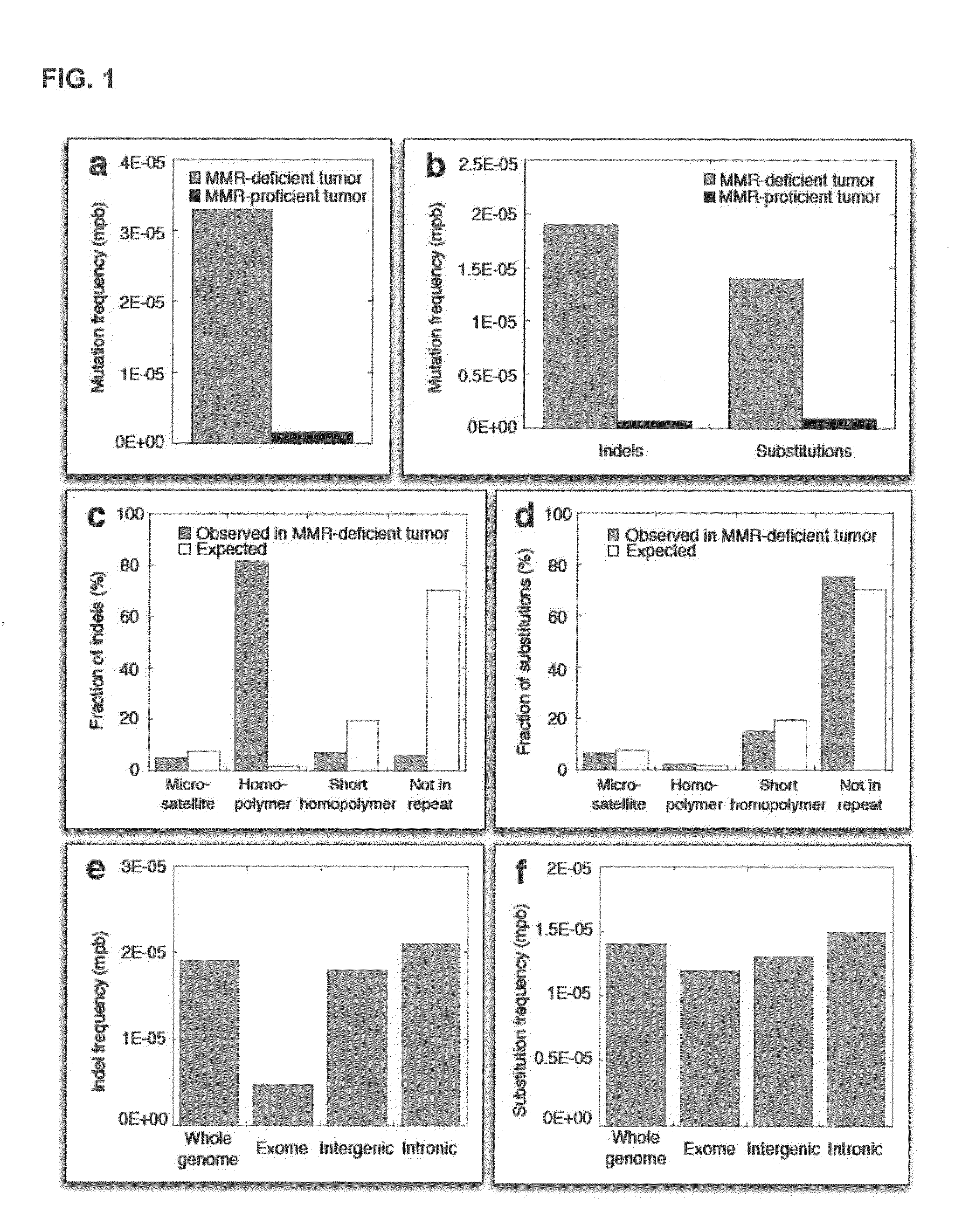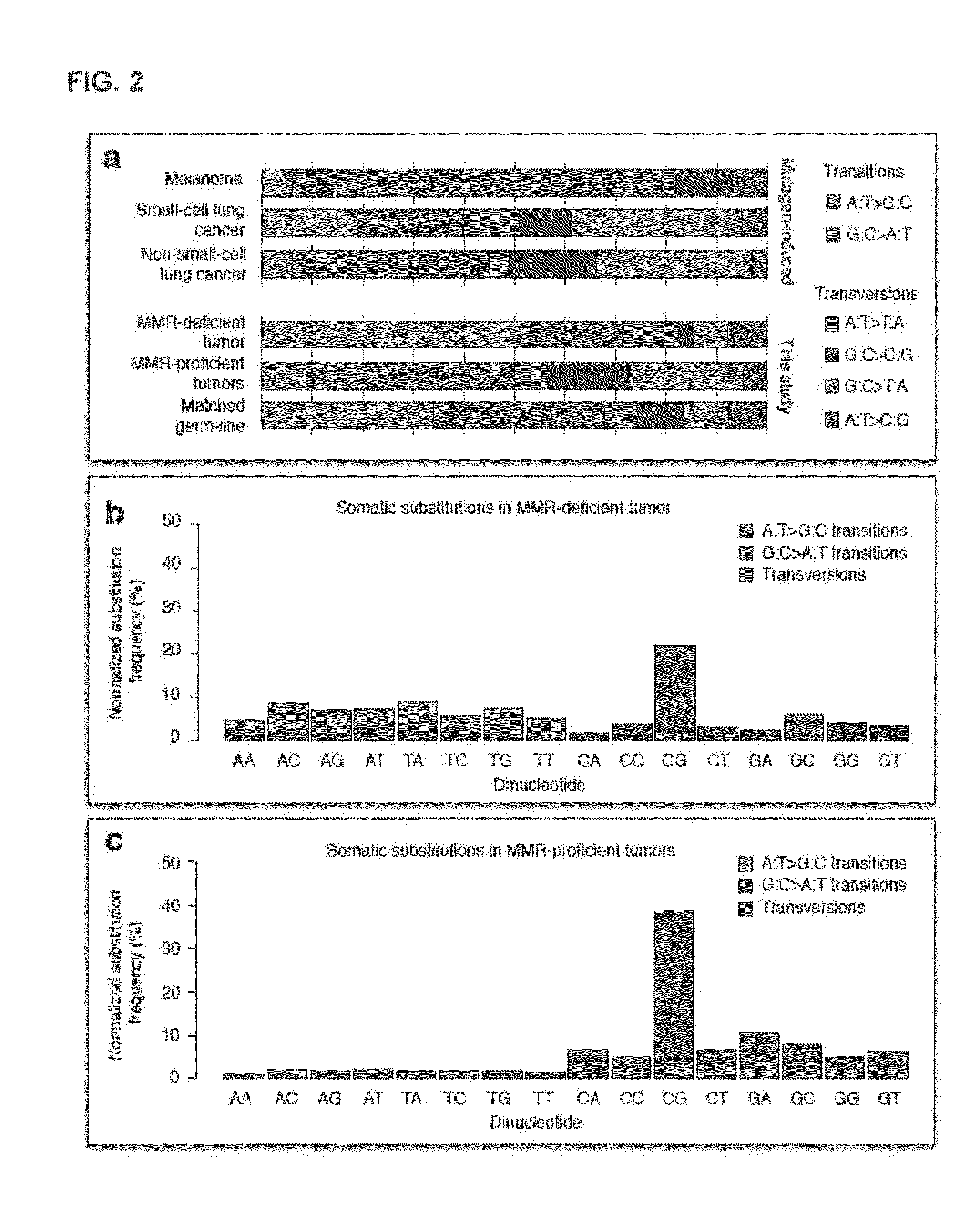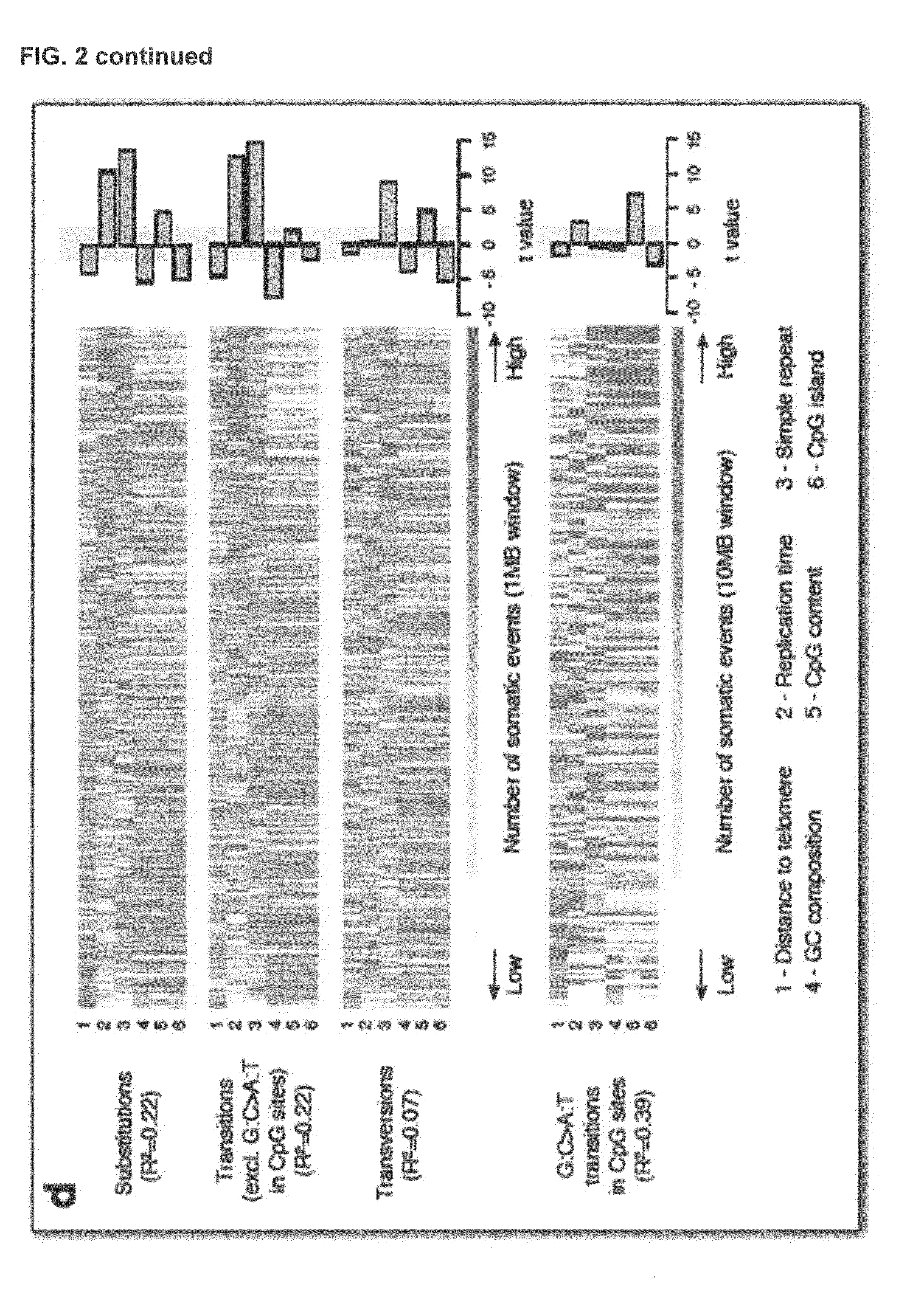Novel markers for detecting microsatellite instability in cancer and determining synthetic lethality with inhibition of the DNA base excision repair pathway
a microsatellite instability and cancer technology, applied in the field of cancer and medicine, can solve problems such as synthetic lethal interactions, and achieve the effect of increasing costs
- Summary
- Abstract
- Description
- Claims
- Application Information
AI Technical Summary
Benefits of technology
Problems solved by technology
Method used
Image
Examples
example 1
Whole-Genome Sequencing of an Endometrial Tumor with MMR-Deficiency
[0219]To select MMR-deficient tumors for whole-genome sequencing, standard diagnostic tests were used, including immunohistochemistry of MMR proteins (MLH1, MSH2 and MSH6), assessment of microsatellite instability (MSI) using the extended Bethesda panel (Pinol et al., 2005) and methylation profiling of the MLH1 promoter. Results for immunohistochemistry and MLH1 promoter hypermethylation are shown as the top three lines in Table 9. Microsatellite instability (MSI) status was analyzed at ten different loci containing mono- or dinucleotide repeat sequences (respectively, two and eight markers), using the panel recommended by the international guidelines for evaluation of MSI, i.e., the revised Bethesda panel (Boland et al., 1998; Dietmaier et al., 1997). PCR amplifications were performed in two pentaplexes: Multiplex A (BAT25, BAT26, D5S346, D17S250, D2S123) and multiplex B (BAT40, D17S787, D18S58, D18S69, TGFβ-RII). T...
example 2
Somatic Mutation Patterns in the MSH6-Deficient Hypermutator
[0223]Studies in model organisms and cell lines revealed that somatic mutations arising due to MMR-deficiency mostly involve insertion / deletions (indels) that affect microsatellite sequences (di- to hexa-nucleotide repeats with a minimal length of six bases and at least two repeat units) and homopolymers (mononucleotide repeats with a minimal length of six bases) (Ellegren, 2004). In order to test this hypothesis, the genome was stratified into four different classes using the following definitions:[0224]Microsatellite regions: di-, tri-, tetra, penta- or hexanucleotide repeats consisting of at least two repeat units and with a minimal length of six bases.[0225]Homopolymer regions: mononucleotide repeats with a minimal length of six bases.[0226]Short homopolymer regions: mononucleotide repeats of three, four or five bases in length.[0227]Non-repeat regions: the remainder of the genome, i.e., every base that is not part of a...
example 3
Exome Sequencing of Mismatch Repair Deficient and Proficient Tumors and their Matched Normal Samples
[0235]Ten additional MMR-deficient EM and CRC tumors were selected characterized by the absence of either MLH1, MSH2 or MSH6, as well as 4 MMR-proficient tumors (Table 9, Table 13). Thus, in total, fourteen tumor-normal pairs were collected for exome sequencing, including eleven endometrial tumors (EM) and their matched germ-line samples and three colorectal tumors (CRC) and their matched germ-line pairs. All tumors were primary, chemo-naïve tumors. Tumor DNA was derived from fresh frozen tumor tissue, while matched germ-line DNA for these samples was extracted from peripheral white blood cells. Detailed clinical information for all these samples is listed in Table 13. Additionally, five primary endometrial tumor cell lines that are MMR-deficient were included in the analysis, so that a total of sixteen MMR-deficient tumor samples is reached.
3.1 Standard Diagnostics Tests
[0236]Tables ...
PUM
| Property | Measurement | Unit |
|---|---|---|
| Fraction | aaaaa | aaaaa |
| Fraction | aaaaa | aaaaa |
| Electrical resistance | aaaaa | aaaaa |
Abstract
Description
Claims
Application Information
 Login to View More
Login to View More - R&D
- Intellectual Property
- Life Sciences
- Materials
- Tech Scout
- Unparalleled Data Quality
- Higher Quality Content
- 60% Fewer Hallucinations
Browse by: Latest US Patents, China's latest patents, Technical Efficacy Thesaurus, Application Domain, Technology Topic, Popular Technical Reports.
© 2025 PatSnap. All rights reserved.Legal|Privacy policy|Modern Slavery Act Transparency Statement|Sitemap|About US| Contact US: help@patsnap.com



